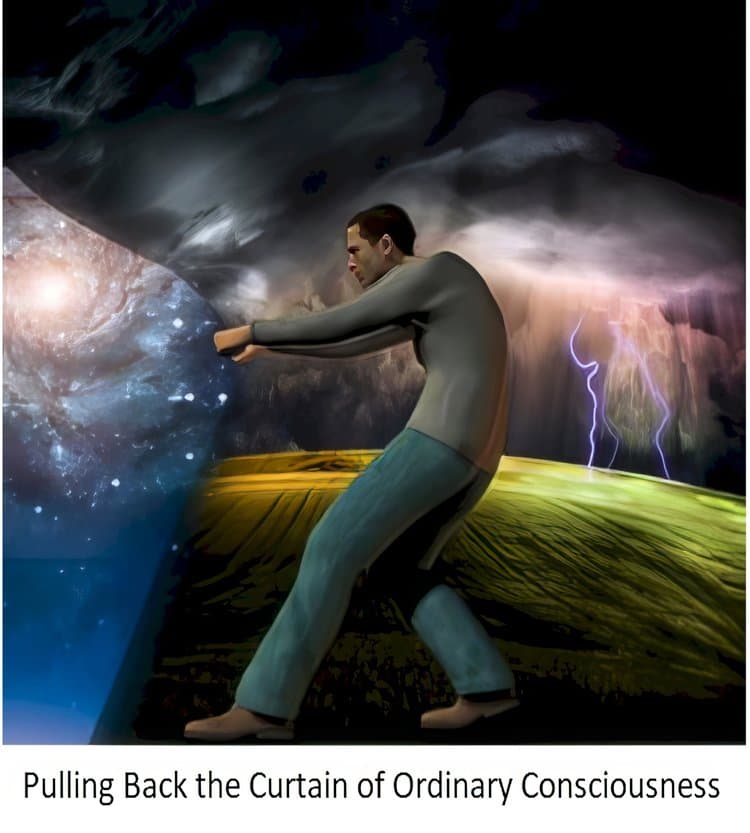In your time zone: 2023-02-23T19:00:00Z
ZOOM video conference: Launch Meeting - Zoom
Overview
Thompson begins his Wissenskunst journey, illustrating our lost cosmology by taking a detailed, interpretive look at the folktale “Rapunzel”. He emphasizes that such tales are much deeper than mere symbolic expressions of earlier mentation, and hypothesizes that our most ancient forebears recognized (or felt or experienced) a essential connection between the tale and the world in which we find ourselves. In other words, his approach will not be a mere rational analysis of the contents of the tale, rather a structured exploration of chaos evoked and ordered through it.
The social and political turmoil of the 60s gave rise to not only a rabid scientism but also to a severely deconstructionist postmodernism and a largely ungrounded new-ageism that have greatly impacted our collective psyches. By establishing a reasonable and structured method, he approaches the tale in a focused yet imaginative way in order to unlock the deeper strata of meaning therein, namely the literal, the structural, the anthropological and cosmological levels. This appears, of course, as a mighty undertaking for such an easily-overlooked little tale, but the higher he climbs the deeper he seems to descend: into the depths of meaning in the story, but also to the possible origins of the story itself.
In some sense, the journey he has planned through the book is mirrored in the exploration of this particular tale, a fractaled image, if you will, of the trajectory of the text as a whole. How successful he is at this is, of course, up to you, the reader, to decide. This is not your everyday stroll in the garden.
Reading / Watching / Listening
Thompson, William Irwin (1989) Imaginary Landscape: Making Worlds of Myth and Science, New York, St. Martin’s Press; Chapter 1 “Rapunzel: Cosmology Lost”.
Lab section
Taking his impulse from the first four sentences of the Prologue (p. xi), we agreed to try and make time – before, during, and after our reading – for some “open reverie” in relation to the text; by practicing some attentive receptivity, collect your impressions, feelings, and thoughts to share at the beginning of our upcoming get-together.
Reading Schedule
- Feb 09: Acknowledgements, Prologue
- Feb 23: Chapter 1 ←
- Mar 09: Chapter 2
- Mar 23: Chapter 3
- Apr 06: Chapter 4
- Apr 20: Epilogue
Seed Questions
-
What role do the eyes, the metaphor of “vision”, play in the Rapunzel story? How significant do you think this is?
-
Which other of Thompson’s metaphors caught your attention? How do these interact with the vision metaphor just referred to?
-
What do you think of Thompson’s four-phase interpretive schema? How does it compare/contrast with other schemas you are familiar with or perhaps have developed on your own?
-
How well do you think Thompson succeeded in doing the story justice?
Context, Backstory, and Related topics
On-site
Cosmos Café [2023-01-26] – Deja Vu all over again … or another spin of the wheel?
Cosmos Café [2023-02-09] – WI Thompson’s ‘Imaginary Landscape’ 1
Off-site
English-German dual language version of the Rapunzel tale (For comparison to WIT translation)
The Motherly Sorceress: Frau Gothel as a Non-Villainous Mother-Figure by Jessica D’Aquin
Young Women Were The True Originators of the Grimms’ Tales by Christine Lehnen
Proposed Agenda
-
Welcomes and greetings
-
Sharing results of the practical exercise for this session: receptivity – impressions from open revery opportunities
-
Sharing of other impressions and ideas generated by the reading
-
Deeper engagement of the reading for this session
-
Wrap-up and hand-off to next session











![Natur und Technik (Nature and Technology [HD Available])](https://img.youtube.com/vi/dYUJYpCs1Hs/maxresdefault.jpg)




